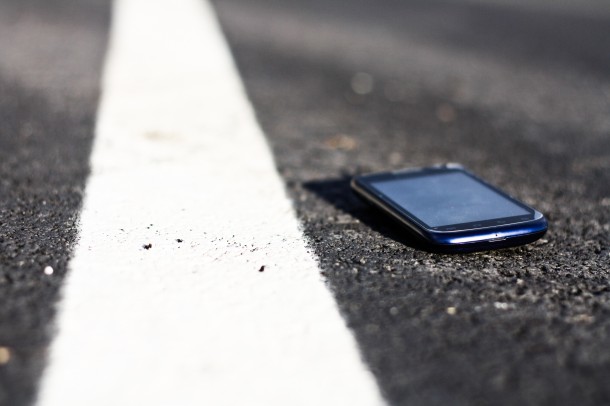

“I’ve got an iPhone 4 and a MacBook Pro, but I don’t have my license,” says first-year St. Thomas student Alexandra Van Rijn.
Van Rijn, better known as Addi, works at McDonalds in Oromocto. She relies on her father to drive her to work where she earns enough money to pay her own phone bill.
It’s a common trend. The cell phone, and technology in general, is becoming more important to young people than the common automobile.
“I know getting my license is important, but so are my friends,” says Addi.
That connectivity is what is shifting importance. Everyone has a cell phone. Not everyone can drive.
Looking back two generations, we are treated to the prime of the automobile. Turning 16 meant you were granted the privilege to pilot your very own set of wheels. Whether it be a muscle car or a wood-paneled station-wagon the payoff was the same. It meant being able to venture off with friends, unsupervised. It was a steel universe that encased private conversations. It was a makeshift module for making out and more.
Switch back to present day. Many of those unique aspects have been replaced by the convenience of modern technology.
Private conversations take place in pockets via the text message. Over 157.2 billion texts go out a month in the U.S. according to Pew Research group. It’s most likely you were born before the very first text was sent.
Conversations and even gossip have migrated online. Before, people had to meet up, drive or walk to each other to exchange the ‘who was sleeping with who’ or yell about latest sports upset. Now much of that is contained, and let’s not forget recorded, online. While conversations and human interactions still do take place, it’s obvious to see that much of it now takes place in the online sphere, eliminating the need to be in the same room as everyone else when they happen.
An example of yesteryear; missing a day of high-school meant missing an entire day of social interaction with friends and being out of the loop for 24 hours. You had to be there to get the experience.
The same went for socializing outside of school. You had to be there to get it.
Not anymore. Facebook is a personal newsletter, updating 60 times a minute, to keep you in the loop. Texts are with you 24/7. You no longer have to be present to experience the social experience.
“I get most of my information from online and lots of different ways. I have a MacBook, and iPhone 4 and I Skype a lot,” says Addi.
Those devices represent another aspect that places less emphasis on the automobile. Envy.
While the car is still a dominant indicator of social status, it isn’t as accessible to young people as it once was. It was more common for young people in 1960 to own a roaring muscle car then it for them to own a Mustang or Camaro today. It is much more likely that someone will have the latest iPhone.
Names such as MacBook, iPad, and iPhone 5 have replaced Mustang, GTO and Torino in terms of desirability. The status associated with these new names represent a shift in what is most important to young adults.
While St. Thomas science and technology professor, Jane Jenkins, was unable to comment on the changing of the guard between tech and vehicles she was able to voice an opinion about becoming too reliant on social media.
“There’s been some research that people are becoming isolated even as they think they’re connected online,” says Jenkins.
She points to the work of Sherry Turkle, writer of ‘Together Alone.’ Tukle’s book explains that the more people are connecting to each other online, the more they are sectioning themselves off from the real-world. The worry is that as people interact more through social media, and online connectivity the real need for human interaction is being neglected resulting in a generation feeling incredibly alone, neglected and depressed.
Calling technology the new “architect of our intimacies” Turkle argues as social animals, we cannot duplicate our social interactions.
People should be with people.
That means getting to people. While getting around in personal vehicle isn’t the only option, it is the best and cheapest method for getting where you want, when you want.
In that same vein of getting what you want, the online environment is doing its part in removing the car from the shopping spree.
Online purchases are only increasing and the convenience having everything brought straight to your door is just another reason for people not to drive.
“I just get my books mailed to my house,” explains STU social work student Amanda Gallant. “Instead of going to chapters and picking it up.”
Online sales giant Amazon leads the pack in online sales. The website was registered in 1995. 16 years later it makes over $48 billion in revenue. That’s money people are not driving to spend in stores.
While Addi admits there are many things technology can do better than a set of wheels she says a license and a car are still keys for independence.
“I don’t like driving,” says Addi.
“It’s scary, but I know that it’s very important for work and for getting jobs.”

